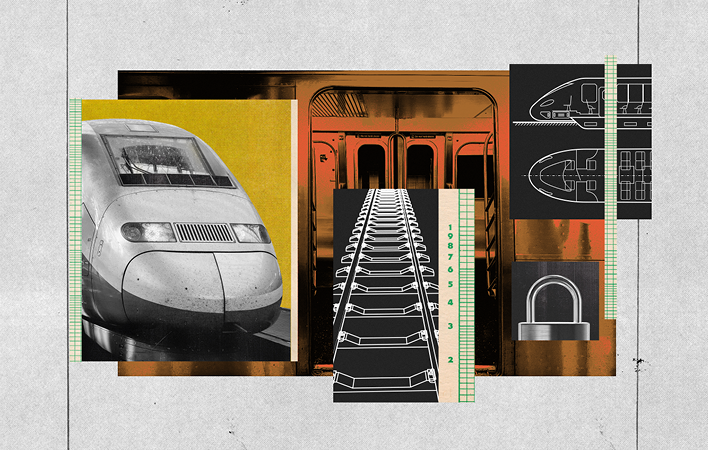Trains ground to a halt for several hours in Denmark last November after a ransomware attack hit a railway subcontractor. Earlier in 2022, cybercriminals breached the computer system used by Italy’s state railroad, forcing a suspension of ticket sales. In 2016, a cyberattack shut down ticketing machines for the San Francisco Bay area’s light rail system.
American trains are vulnerable to breaches—yet they don’t get the same attention in academic research as other key infrastructure. “Traditionally, railway research in the U.S. has not been on par with Europe and Asia,” says Nii Attoh-Okine, chair of UMD’s Department of Civil and Environmental Engineering.
That’s why the department this year established the Digital and Cyber Railway Engineering and Operations Center, or DCREOC. Attoh-Okine, who directs the center, says its goal is to make railways more resilient in the face of increased cyber threats. “As leaders in the railway engineering field identify the needed changes and develop best practices, DCREOC will serve as a focal point to guide this new era of railway transportation,” he says. “We envision the center as a leader in this area.”
What does it mean for infrastructure to be resilient?
My idea was to look at resilience in infrastructure like we look at resilience in a person. When there is a death in the family, how did the person grieve? When do they come back to their baseline? Using this idea, we consider an infrastructure that has damage or a failure: How long will it take to return to its normal position?
In railway infrastructure, we’re used to breakdowns and derailments—but what if there is a hacking? How will that affect the resilience of the system? This creates a new avenue we call cyber resilience. This is the overarching framework of the Digital and Cyber Railway Engineering and Operations Center: we are looking at both the physical and the cyber.
What has the center accomplished so far, and what else are you planning?
The center is paving the way for digital and cyber railway research in the United States. We have already invited the federal government for a special railway safety conference on campus. Carolyn Hayward-Williams, director of the Office of Railroad Systems and Technology, was the keynote speaker; researchers from the Federal Railroad Administration gave presentations. It is good for the state—and the nation—to tackle cyber resilience issues. If there is a hacking at Union Station, for example, what are the processes in place to make sure it doesn’t last beyond a certain amount of time? That’s a major issue because it’s a pipeline between New York and Washington, D.C.
Everybody’s talking about big data. How can we use the digital information we collect from the train to benefit the passenger? We need to get to a place where we are not just collecting data, but using it to benefit the user; that will help with economic growth, as well as quality of life.

When the department moves into Zupnik Hall, you’ll share the space with the Quantum Technology Center. What opportunities do you see for collaboration?
We’ve already begun collaborating. In March, the center hosted a Cyber Resilience and Quantum Computing in Railway Engineering and Operations workshop to brainstorm how quantum computing and technology can address operational, logistical, and maintenance issues in railway engineering.
Exploring the way quantum computing can work with critical infrastructure is a very new area. The fact that we’ll have quantum in the building can foster this non-traditional collaboration; maybe we can create this niche. When we think about what UMD, and the new building, can offer—now is the right time.
How will Zupnik Hall position the department to play a larger role in solving the civil and environmental engineering challenges of the state and the nation?
The 2021 bipartisan infrastructure deal [which allocated more than $500 billion to infrastructure projects, including bridges, passenger rail, airports, water infrastructure, and coastal resiliency] has opened a new window into what we should look at as civil engineers. Zupnik Hall will take us ahead of the curve by giving us new space to address some of the issues the federal government is invested in. This building also serves as a place where we can invite policymakers, opening the door for future funding from the federal government.
We’re also continuing to build our expertise in waste treatment and flooding; this building will give us an opportunity to hire the best and the brightest. There are some civil engineering tests that our state agencies don’t have the capability to do, so they usually take them outside Maryland. Zupnik Hall will provide the space and equipment to help, to go beyond our teaching and training.
Back to Landing Page

